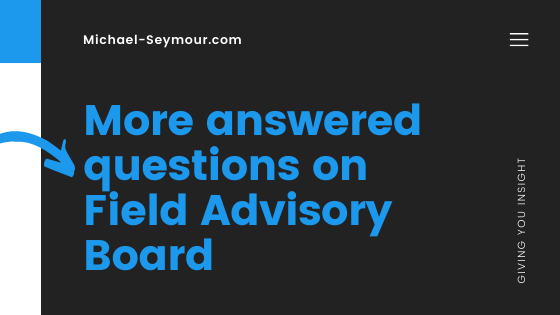In my last blog post, I talked about the Field Advisory Board(FAB). It generated some discussion offline, and I thought I should do a little bit more of a Q&A on the topic.
How often does a Field Advisory Board (FAB) meet?
I usually do it two to three times a quarter, but leave the last few weeks of the quarter clear for reps to close business.
How long are the meetings?
60 minutes to 90 minutes seems to work best. I always like to have the meetings be robust, so I generally put more topics on the agenda than I can possibly cover.
Are meetings in person or virtual?
In the past, I have run Field Advisory Board meetings virtually on a regular cadence, and then have an in-person meeting once a year. Maybe this could be added to your SKO, or possibly as a stand-alone event.
How do you structure meetings?
I reach out to interested parties that might have a topic – marketing, product marketing, enablement, sales ops, product management, etc – and gather a list of items to discuss. Then, I prioritize it and establish an agenda. I publish the agenda prior to the meeting, and then follow-up with action items. At the beginning of each meeting, I review what we learned from previous calls and any related actions taken. This recap helps to build trust with the team.
Should I invite sales management?
No. Sales management might hog the feedback mechanism, and judge their reps for their feedback. You want honest feedback from the field.
Who else should be on the call?
I try to keep invite lists short outside of the field advisory board. Only those with topics on the agenda attend. I record the call, and also send out recap/action items to management.
Do members stay on it forever?
No. I rotate it every year. I ask management for suggestions for attendees, then I invite them. If someone frequently no shows, I kick them off the board and replace them.
Why would a rep want to be on the FAB?
In my experience, most people are quite excited to give feedback, especially if you act on it. They have opinions but are never asked for their opinions. They usually jump at the chance to be on the board. Furthermore, once others learn of what is happening, you will get inquiries from jealous colleagues about why can’t they be on the board!
This sounds like a lot of work.
It is a lot of work, but timely and direct feedback stops rework or mistakes in the GTM strategy.

